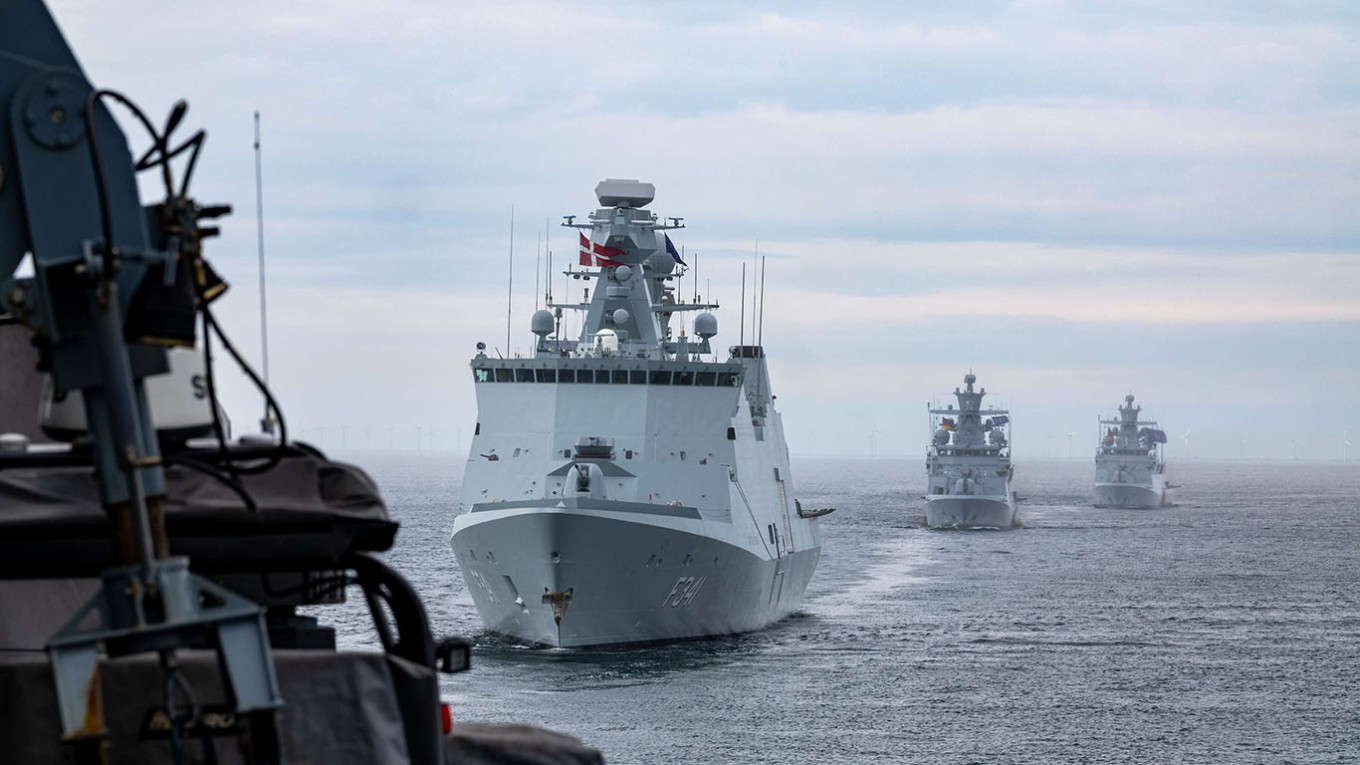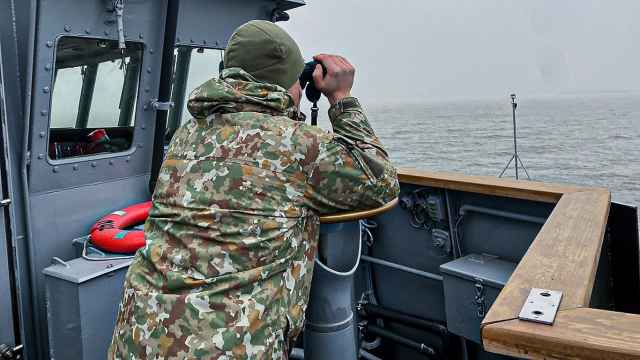BRUSSELS — NATO has not detected “malign damage” to critical infrastructure in the Baltic Sea since it launched its Baltic Sentry operation in January, the head of public communications at NATO Maritime Command told The Moscow Times.
“[Baltic Sentry] definitely is a deterrent. We also know that these shippers, these illegal shippers, are aware that they're being watched very closely, and we believe that in itself is a deterrent,” Commander Arlo Abrahamson said.
Speaking to The Moscow Times on the sidelines of the NATO defense ministers’ meeting at the alliance’s headquarters, Abrahamson cautioned against interpreting the news as a sign that the Baltic Sea had been fully secured.
“At the same time, we're very keen to understand that the threat is not eliminated. There's possibilities for illegal shippers or others to cause accidents and carry out malign activities, which is why Baltic Sentry continues,” he said.
Baltic Sentry was launched following several incidents in late 2024 in which subsea cables between Estonia and Finland were damaged or cut by ships dropping or dragging their anchors.
Apart from Russia’s Kaliningrad exclave and the eastern end of the Gulf of Finland, the Baltic Sea is entirely surrounded by NATO members, including some of the most enthusiastic backers of Ukraine and the alliance’s hardening defense posture.
NATO member states have accused Russia of carrying out hybrid warfare in the region.
Russia has denied targeting subsea cables in the region. Experts warn that Russia’s use of its shadow fleet of vessels that are not registered in Russia creates ambiguity about whether the damage was accidental or intentional.
Attacking undersea infrastructure can disrupt countries’ electricity, internet, telecommunications and even gas supplies.
One cable between Lithuania and Sweden that was cut in November 2023 provided about a third of Lithuania’s internet capacity.
A Finnish court this month dismissed a sabotage case against three crew members of the Eagle S, a Cook Islands-flagged oil tanker that dragged its anchor along the seabed for around 90 kilometers on Dec. 25, 2024. The incident damaged the EstLink 2 power cable and four telecommunications cables connecting Finland and Estonia at a cost of around $70 million.
Whether Russia was responsible was not discussed during the trial.
Baltic Sentry identifies suspicious behavior by monitoring how ships and aircraft deviate from their planned routes.
Abraham said he did not have the data to show whether levels of this activity had decreased since January and that levels fluctuate across any given week or month.
A Message from The Moscow Times:
Dear readers,
We are facing unprecedented challenges. Russia's Prosecutor General's Office has designated The Moscow Times as an "undesirable" organization, criminalizing our work and putting our staff at risk of prosecution. This follows our earlier unjust labeling as a "foreign agent."
These actions are direct attempts to silence independent journalism in Russia. The authorities claim our work "discredits the decisions of the Russian leadership." We see things differently: we strive to provide accurate, unbiased reporting on Russia.
We, the journalists of The Moscow Times, refuse to be silenced. But to continue our work, we need your help.
Your support, no matter how small, makes a world of difference. If you can, please support us monthly starting from just $2. It's quick to set up, and every contribution makes a significant impact.
By supporting The Moscow Times, you're defending open, independent journalism in the face of repression. Thank you for standing with us.
Remind me later.







